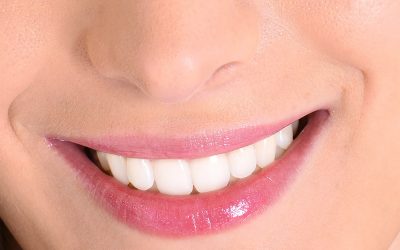If you ever find yourself clenching your teeth more often than not, you may not think much of it. This can happen anytime whether we are aware of it or not. Sometimes, it happens as a stress reaction or while we are unconscious and sleeping. But did you know that this repeated behavior is actually considered a condition? And it even has a name:
What is Bruxism?
Teeth grinding, also known as bruxism affects about 8.6% of the general population* and it is typically more frequent in children. As people age, this issue tends to disappear. However, if it doesn’t, continuously clenching or grinding your teeth can lead to a multitude of dental and health issues and should be addressed as soon as possible.
There are two types of teeth grinding. Awake bruxism occurs during the day as you are awake and going about your daily life. It may be unconscious behavior or done purposefully as a reaction to certain events. Sleep bruxism on the other hand happens as the name suggests, while you are asleep and is completely involuntary.
If you have a feeling that you might be grinding your teeth but aren’t sure, there are ways to tell if this has been happening to you.
Am I Grinding my Teeth?
There are some very obvious symptoms of bruxism as this condition doesn’t just affect your teeth! They include:
- Teeth that appear short, flat, chipped and/or broken
- Painful and/or sensitive teeth
- Pain associated with the jaw muscles
- Frequent and unexplained headaches and/or migraines
- Fatigue and trouble staying asleep at night.
Overtime, grinding your teeth can completely wear them down to the point where you may experience extreme sensitivity and pain. You will need serious and expensive restorations in the future and this may even induce issues with associated joints and opening and closing your mouth. But stopping this behavior isn’t difficult!
How do I stop Grinding my Teeth?
Here are 3 tried and true methods to help relieve you of bruxism’s symptoms and stop the wear and tear on your teeth:
1. Use a Night Guard:
Night guards are plastic trays that you clip onto your teeth while you sleep, though in extreme cases of awake bruxism, they can also be used during the day. The tray creates a barrier between your teeth which do not allow them to rub together, eliminating any chance of damaging your teeth. You can also purchase soft night guards which, in addition, act as a cushion during clenching to relieve you of the associated jaw pain and headaches as well.
2. Home Remedies
If you suffer from clenching your teeth throughout the day, you can try to correct the behavior at home by training yourself to relax your jaw. Try to check in with yourself throughout the day by bringing attention to your jaw and take note if there are events which cause you to tense up. You can also use a warm washcloth behind the ears to help loosen the muscle. Cutting back intake of energy drinks and caffeine may aid in stopping tension as well.
3. Clinical Correction Methods
Your doctor and dentist may decide that in-office treatment methods may work best for your case. You may need orthodontic treatment to re-position your teeth so that they stop rubbing together. Your dentist can also reshape some of the surfaces of your teeth to help correct your bite and further reduce friction and contact between your teeth.
If you’re suffering from teeth grinding and want more information about treatment options, Dr. Savita Chaudhry and her clinical team are available to meet with you to discuss your case! Give us a call at (416) 742-2300 to reserve your free consultation and start on your road to being bruxism-free.




